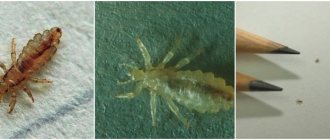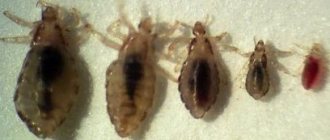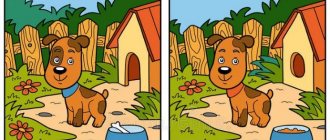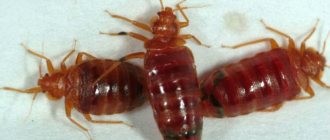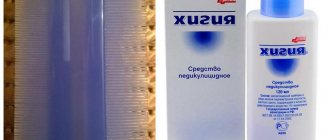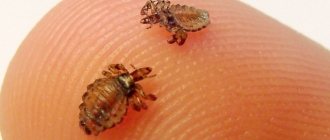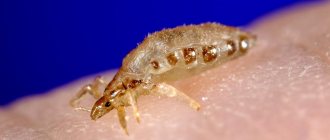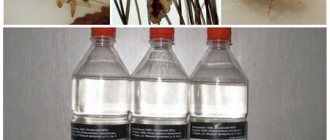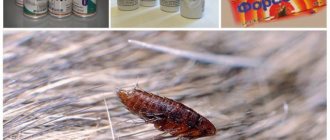When pediculosis is detected in one of the family members, treating the apartment for lice and nits is of particular importance.
The absence of one can lead to infection of the entire family with an unpleasant parasitic disease, and it will be much more difficult to completely get rid of insects. Important preventive measures are: disinfection of combs, linen, clothes, carpets, capes, blankets.
If lice are detected, treatment can be carried out using various means, for example, using chemical pest control agents or substances of natural origin. In addition, to prevent the reappearance of parasites, it is necessary to re-treat the room after a few days. Which methods are most effective and are especially popular - we will consider further.
What and how to process
Treatment for lice and nits at home involves mandatory disinfection of almost all household items that may be infected with parasites. Pay special attention to bed linen, blankets, carpets, capes, children's toys, lice combs, combs, and towels. These items should be processed in various ways, the features of which are described in detail below.
Combs
Removing parasites from hair almost always requires the use of fine combs. After each procedure, the item must be subjected to a disinfection procedure.
So, how and with what should you treat combs after lice and nits?
The most suitable methods are:
- Mix hydrogen peroxide, table vinegar, and plain water in equal parts. Pour the prepared vinegar solution over the ridges, then leave them for several hours. After this, hygiene items should be scalded with boiling water.
- A less complicated method is boiling. In order to get rid of lice and nits, it is enough to boil the items for several minutes. This measure is quite enough to kill the parasites.
This procedure is carried out not only to treat lice combs, but also all combs and hairpins that are available at home.
Bed dress
Linen treatment for pediculosis must be carried out daily. In order to disinfect and treat bedding against lice, just boil them and then leave them outside to dry. It is also important to treat feather pillows for lice and nits. To kill parasites, it is recommended to freeze them outside for several hours.
Washing things
Treating items against lice requires mandatory washing. Equally destructive for insects are high temperatures and large amounts of water. To get rid of uninvited guests, just wash and then boil the items. The washing temperature should be at least sixty degrees. Items must be ironed on all sides. Treating your apartment for linen lice is mandatory, since bed linen is often the source of infection.
Furniture
Treating furniture against lice is also a mandatory step in disinfection. Parasites are often localized in sofas, beds, and chairs. In order to get rid of them, it is recommended to use special pest control preparations, for example, fas. After the procedure, it is necessary to ventilate the home well.
If this option is not suitable for some reason, you should treat the apartment for lice using a solution of vinegar diluted in water. Gloves should be used as contact with liquid may cause chemical burns. It is recommended to thoroughly spray the furniture with a vinegar solution using a spray bottle. Since the product has a pungent odor, thorough ventilation is required after completion of the procedure.
Execution order
Treatment against parasites is carried out independently. You can also resort to the services of special organizations that have all the necessary equipment and professional chemicals. Disinfection is carried out in several stages:
- removal of lice from people;
- cleaning instruments;
- washing clothes and bed linen;
- cleaning rooms from lice and nits.
Disinfection of the premises is carried out only after all residents have been treated for lice. First of all, bedding and personal clothing must be treated. Then - upholstered furniture, carpets and baseboards.
Cleaning instruments
Be sure to disinfect all combs, brushes, hairpins, hoops, elastic bands and other tools in the house, and not just those that were used to remove lice from the head. This will help eliminate unexpected relapses. Many people are interested in how to treat a comb after lice at home. There are several methods of sanitation:
- The fastest and easiest way to treat a comb for lice is to boil it for a few minutes, and then wipe it with an alcohol solution or vodka. Do not treat wooden combs and brushes, combs with natural bristles or soft rubber with water. This will lead to deformation of the products.
- Instruments can be disinfected in a solution consisting of hydrogen peroxide and vinegar mixed in the same ratio. Objects are placed in it for at least 3 hours, then transferred to water heated to 70 degrees or higher, and kept in it for half an hour. The final stage is rinsing under the tap with any detergent.
- At the pharmacy you can purchase special solutions, shampoos and sprays designed to eliminate lice, and treat hygiene items with them. Effective disinfectants are Veda, Medifox, Nix, Paranit.
- The dishwasher, which is set to a high temperature mode, can handle the processing of combs. Use this method with caution as cleaning may warp some combs.
- Disinfection using a freezer. There should be no food in it. All hygiene items are sealed in a plastic bag and placed in the freezer for 10-12 hours. In this way you can definitely kill all lice and their eggs.
- Baking soda mixed with warm water in a 1:2 ratio will help get rid of dirt and chemical residues on the ridges. Keep the combs in the prepared solution for about 15 minutes, and then rinse and dry.
It is not recommended to use strong-smelling preparations (kerosene, Dichlorvos, etc.) to treat lice tools. The material can absorb odors and then get rid of them very difficult.
Wash
Treatment of linen for pediculosis should be mandatory. It is carried out in parallel with the removal of lice on the head, since the parasites can crawl onto the bed. If you continue to use dirty things, re-infection is guaranteed.
All things and the bed on which the patient slept are subject to disinfection. You need to know how to treat clothes against lice:
- It is advisable to boil cotton items with soda.
- When machine washing, use the maximum permissible temperature setting and wash for at least half an hour.
- After washing, the clothes are dried and ironed on both sides. You need to iron folds and seams especially carefully, as lice and nits may remain in them.
Particular attention is paid to things that have been treated and combed out for parasites.
Processing of items that have washing restrictions occurs in a different way. They must first be soaked in a solution of kerosene and DDT soap (dust) in a 1:1 ratio. Items are kept in the composition for half an hour, and then washed in accordance with the necessary thermal restrictions.
Lice cannot tolerate temperatures that are too low or too high. The scorching sun and severe frost are good for disinfecting things. Take the washed clothes out into the fresh air for a couple of days. During this time, under unbearable conditions, the lice die. A good alternative is to treat things with a steam generator or iron. You can keep clothes in the freezer.
Treating bed linen and clothing against lice can be done with Nix, Itax, Veda sprays. They help remove body lice. It is necessary to disinfect with them even those things that did not come into contact with the patient, but were in the same room with him.
Large items (blankets, pillows, mattress) are sealed in a plastic bag and left for 10 days. No air should get into the bag. During this period of time, all living lice will die. After this, it is advisable to wash all the items, have them dry cleaned, or replace them with new ones.
How to treat an apartment for lice
In addition to the mandatory washing of clothes, it is necessary to disinfect the room in which the patient was located.
Before sanitizing the room for lice, you need to prepare:
- Wash the floors, collect nits and dead lice. It's best to burn them.
- Place personal clothing, toys, and bedding in bags for further disinfection.
- Remove cosmetics and food from the room or cover it.
- If there are carpets on the floor, they should be vacuumed.
- Dilute the treatment solution strictly according to the instructions.
- When disinfecting, you need to especially carefully treat secluded places where live lice with larvae can hide - furniture upholstery, baseboards, cracks in the floor, blankets, soft toys.
- During treatment, pets, children and bedridden relatives must be evacuated from the apartment. You can enter the room at least 3 hours after disinfection.
- At the end of all activities, the room must be ventilated for at least an hour and a half. This is necessary to avoid poisoning.
- Wipe household items with a damp cloth.
- When processing, you should use a respirator and put on protective gloves on your hands. Wash the clothes in which anti-pediculosis measures were carried out.
After about a week, the apartment is thoroughly cleaned.
This will completely clear the room of chemical residues and dead lice. And after 2 weeks, you need to disinfect the room again to destroy nits that were not killed during the previous sanitization. Many pharmacies and household chemical stores offer a good selection of natural and chemical preparations that can get rid of lice and nits in a short period of time. Available in different forms:
- Dust (powder). Cheap, but not ideal method of getting rid of lice. This is a very strong toxic agent that is absorbed through human mucous membranes and skin. Often provokes allergies.
- Gels, creams and pencils are useless tools in the fight against lice indoors. They leave white and oil stains on clothes and furniture. They are inconvenient to use and impossible to disinfect the entire room.
- Aerosols and sprays are the most effective and easiest way to treat lice from your belongings and objects in the apartment. During disinfection, the skin does not come into contact with a toxic substance. It is important to protect your respiratory system with a bandage or respirator. After them, you cannot enter the room for 3-4 hours. The best preparations for lice are Para Plus, Pediculen, A-Par, Cypermethrin and Almitrin with a low level of toxicity, Peretrum spray with chamomile, Raid, Combat spray, Lambda-Zone, Clean House, Executioner. One can is enough to treat a small room. The duration of action is 2 hours, but this is enough for all insects to die.
- Concentrated solutions that are diluted with water. The composition is sprayed from a spray bottle onto furniture and other objects. The difference from aerosols is that emulsions are diluted independently, but they are much cheaper. Emulsions Avicin, Medifox, Get are used to treat rooms and upholstered furniture. There is another drug without chemical components - Medilis with clove oil. It can be used if there are children and pregnant women at home.
If it is not possible to purchase specialized products, use regular Dichlorvos, Karbofos or a weak solution of vinegar.
Lice and nits die from the suffocating effects of the active substances. These drugs are toxic and have an unpleasant and strong odor. The bed, sofa and soft floor coverings can be sprayed with Nyx, Itax or Veda. Toys can be placed in a bag and placed in the freezer for 24 hours. This way the lice will definitely die.
Preparation for disinfection
Treating an apartment for lice and nits requires careful preliminary preparation. Before carrying out the procedures, you should remove all rugs, capes, carpets, and thoroughly vacuum the floor. If there are pets, it is recommended to temporarily remove them from the premises that will be treated. You also need to take out the pots with plants.
How to treat a comb after lice and nits
> Medicine
27.04.2020
Lice are ubiquitous parasites. Having “caught” insects, you should not hope that everything will go away by simply washing your hair. Most likely, you will have to try a lot to put the patient in order and to prevent the spread of the disease. To do this, treatment of head lice should be carried out not only on the infected person.
It is advisable to provide preventive measures against lice for all family members living in a common area. Sanitation of tools, clothing, and habitat is also an important condition for confident victory in the fight against parasites. Let's consider the correct algorithm of actions so that disinfection against lice is successful.
Full processing: when and why you need it
It is advisable to carry out complete treatment for head lice in all cases when a lice problem is identified.
Sanitation of the patient, things, and the surrounding area will help get rid of parasites faster. Comprehensive measures will significantly reduce the risk of re-infestation with lice.
Being in a risk zone is a reason to think about introducing such actions on a regular basis. They will be an excellent disease prevention.
Unsanitary conditions, crowded living conditions, irregular (poor quality) washing, infrequent changes of clothes, a predisposition to close contacts with strangers are reasons to think about protection from parasites. This applies to permanent and temporary similar conditions. For example, a child’s return from summer camp is a reason to strengthen control and prevent head lice.
Processing technology: family members, things, home
To completely get rid of parasites and peace of mind, treating the apartment when lice is detected is simply necessary. The procedure includes disinfection of all contact persons, things, and the surrounding area. This is necessary to completely get rid of parasites that, even in a short period of time, could crawl onto third-party objects and people.
Note! Treatment of the house is carried out independently or with the participation of an insecticidal organization. A specialized service will offer the services of experienced craftsmen with an arsenal of necessary chemicals.
Disinfection includes several stages:
- patient treatment;
- cleaning instruments;
- washing clothes and household items;
- sanitation of the surrounding space.
Each action is important to obtain an effective result, but for a holistic view of technological processes it is necessary to consider them in more detail.
Treatment of the patient
Treatment of head lice in humans is carried out according to the instructions for the selected drug. It is advisable to carry out the process in a well-sanitized room (at home this is a bathroom). Creating conditions for forced ventilation is necessary when working with insecticides.
When lice are detected, the patient is treated using a disposable cape over the shoulders of the infected person, an additional robe, gloves, and a headscarf for the person performing the sanitization.
After the procedure, things are washed (burned, thrown away in a tightly packed bag). When working with toxic insecticides, it is advisable to use a mask to protect the respiratory system.
The procedure is carried out as follows:
- wash the patient's hair;
- a medicinal drug is used;
- after the allotted time, wash the hair;
- perform mechanical combing with a comb.
After all manipulations, be sure to thoroughly sanitize the room. This is a kind of protection against lice. Detailed instructions for using popular and effective remedies for lice and nits can be found on our website.
Cleaning Tools
Instruments should be washed as they become dirty during the treatment process. This is a guarantee to prevent re-infection when sanitizing for pediculosis is carried out.
It is recommended to carefully observe the ownership of the instruments. Healthy family members should have their own combs. It is even advisable to store them away from the objects of an infected relative.
Disinfectant rinsing of tools after lice is also carried out after complete cure (applies to all combs in the house). This will help avoid unexpected relapses.
The processing options are as follows:
- use of any toxic product intended to combat lice (spray, shampoo, solution);
- using a homemade composition (vinegar, hydrogen peroxide, plain water in a ratio of 1:1:0.5);
- scalding with boiled water (the material of the device must allow).
Important point! In addition to tools, household accessories are sanitized against lice: hairpins, elastic bands, ribbons. The same solutions are used. Treatment of items against lice occurs as follows: jewelry is placed in the composition for 3 hours, then rinsed with hot water (60–70 degrees), washed with soap (shampoo).
Washing things
Cleaning clothes, bedding, and other textiles is a must. Particular attention is paid to the period of active treatment. Parasites can crawl onto textiles. Using dirty utensils guarantees re-infection.
All textiles that come into contact with the patient are washed. It is advisable to boil cotton items. Adding a soda solution will enhance the effect. Linen treatment for pediculosis is carried out at the highest possible temperature.
Linen that has temperature restrictions when washing is sanitized with a solution based on soap and kerosene (1:1). Items are placed in the composition for 20–30 minutes, then washed in accordance with the required thermal restrictions.
Lice are sensitive to extremely high and low temperatures. Frost or scorching sun will be good options for disinfection. In winter or summer, washed items are taken out into the open air for several days. An alternative option would be to use a freezer, iron, or steam generator. It is necessary to ensure that the textiles allow such treatment.
Large items (pillow, mattress, bedspread), children's toys are hermetically sealed in polyethylene and waited for 10 days. During this time, all viable individuals will die.
Finally, it is advisable to wash these items (if possible). The best option is to replace with new ones. A good choice, especially in cases of excessive infestation, is to use dry cleaning services.
The method will be ideal for disinfecting things with lice.
Particular attention should be paid to clothing in which medical procedures are performed. This applies to the things of the patient, a family member who performs insecticidal actions.
Facilities
Treatment for lice involves the mandatory use of toxic agents that have a detrimental effect on parasites. There are a lot of drugs on the modern market that will help remove insects and prevent their reappearance.
Before using the product, it is important to read the safety precautions.
Chemicals
Treatment of lice includes the use of various chemicals intended for disinfection of furniture, linen, bedding, and personal hygiene items. Such products contain substances that are almost completely harmless to humans and animals, but are destructive to parasites. Such drugs can be presented in various forms.
Aerosols and sprays
Various aerosols and sprays are used to treat the surfaces of cabinets, upholstered furniture, bed linen, and capes. The products in this group are non-toxic, that is, they are completely safe for humans. After treating a certain item with a spray or aerosol, there is no need to further clean or rinse it.
Solutions
Concentrated emulsions intended for the preparation of disinfection solutions are similar in specificity to sprays. The preparation for the procedure should be prepared according to the rules written in the instructions attached to the drug. As a rule, such solutions simply need to be sprayed over surfaces using any spray bottle.
Powders
Preparations presented in the form of powders are the most inconvenient option for products intended for treating clothing against lice. In addition, their use is fraught with the risk of small particles of powder getting into mucous tissues, eyes, and respiratory organs. After completing activities that include the use of powders, you should definitely wash the treated items; they cannot be used before, since there is a high probability of intoxication of the body.
Soap
The safest, most effective, and cheapest remedy that can be used to treat almost the entire house for lice is laundry and dust soap. To prepare a saturated solution that will help eliminate uninvited guests, you need to grate or otherwise grind a bar of soap, then place it in a bucket of hot water.
This solution can be used for washing, disinfecting pet hair, cleaning furniture, floors, and walls.
Pencils cream gels
Products presented in the form of gels, pencils, and various creams are not convenient when treating large surfaces, such as floors. However, they can be used to disinfect clothes, small items, and combs. After completing the activities, it is recommended to rinse the items in hot water.
Folk remedies and methods
There are many popular recipes, here are just a few:
- mix water, table vinegar and hydrogen peroxide in a ratio of 0.5:1:1. Soak the combs in the resulting mixture for 3 hours, then place them in hot water for 20 minutes, wash them in soapy water, and rinse;
- immerse combs and brushes in hellebore water for 20–30 minutes, after the time has elapsed, rinse under running water;
- place the combs in boiling water for 15 minutes or in the freezer for 10–12 hours.
Please note that the effectiveness of such treatment methods is lower compared to chemical ones, so we recommend using them as additional ones .
Important! Cleaning activities must be carried out with gloves.
How many times does this need to be done?
It is necessary to sanitize combs using anti-pediculosis drugs regularly throughout the entire treatment period . It is better to do this after each use until the signs of the disease are completely eliminated.
After recovery, final disinfection procedures must be carried out.
